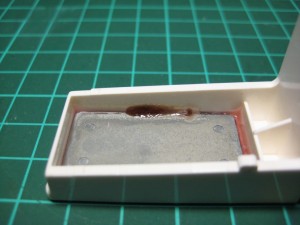The monotrons are sweet little analog toys to fiddle around with. And if you own one you have at least once thought about hacking it, right? Well, so did I and aimed at the monotron Delay. For the standard monotron a couple of resources for modders are available, and especially dinSync´s mod seems to work well for it. But the Delay version appears to handle things a little different…
The main issue is that the gate affects pitch and vice versae.
But only if you look at it from the input side, where you apply external signals to the respective testpoints. From an internal point of view the gate signal is simply derived from the same source as the pitch. So if you apply a +5V gate you are already exceeding the maximum frequency of the oscillator. This results in only a short
Tag Archives: synthesizer
CS15D channel 1 modification mainboard
This is a follow-up to the general modification article.
In an effort to come up with a more detailed documentation for the mod I made an annotated picture of the mainboard followed by some explanations:
Poly-61 repair
Ressurection of a Poly-61
Like some other 80´s polysynths with memory, many of today´s Poly-61s suffer from battery leakage. The problem for most owners without knowledge of the technicalities is that the symptoms come on slowly and do not neccessarily hint at memory. While leaking, the battery may still provide enough power to retain memory while starting to damage the PCB area around it. The device starts acting weird up to doing nothing at all soundwise. The symptoms depend a little on how the synth has been stored and therefore how the acid flowes across the board. If you see a Poly-61 on the used market described as ‘functional’ but ‘holding a steady tone’ it´s most likely a battery dammage.
I purchaised such a unit with the risk of not knowing the exact amount of dammage it had taken. But I was determined to make it fully operable again. After all I thought it couldn´t be worse than the Opera-6 fix.
Continue reading

Red Glue Problem
Some older Roland keyboards suffer from a bad choice of material. The metal plates that give weight to the keys are glued in with a red substance that eventually looses its consistency and drips onto the keybed. Roland did offer a replacement for applicable devices, but it appears that they are now out of stock and can therefor no longer provide that service. Affected devices are mainly JD-800 and D-70. Both my units were affected so I had to come up with a solution. Fortunately not much harm has been done yet so I just had to do a little cleaning.
Here is an image where you can see what it looks like when the glue starts to flow
On the next picture you can see the consistency that it takes on. I used a screwdriver to push back or scrape off the red stuff on seriously affected keys.
I then took a hot glue gun and sealed the red glue along the edges. This should prevent it from flowing. At least I haven´t experienced any leakage again since then.
The whole procedure took a good hour and about ten sticks of hot glue as the black keys need a little more filling.
KORG M1 realtime control
I never thought I´d ever own a KORG M1. But when I recently found a used one at a very reasonable price I couldn´t resist. Now I am not really interested in its famous piano or organ sounds, or the internal sequencer for that matter. I rather want to explore its capabilities to produce drone like soundscapes. And for that, at least a little amount of realtime controllability would be apreciated.
Fortunately all relevant parameters are editable via SysEx. And as I found out the M1 reacts fluently to parameter changes. The only oddity is that the parameter numbers in the SysEx message depend on the structure of the program, and so double oscillator programs have a different parameterset than single programs. I therefore settled for a control set for double oscillator programs as polyphony is not an issue for me. The fact that the display of the M1 also jumps to the currently modified parameter is a nice touch as well…



